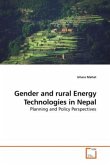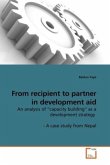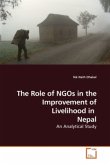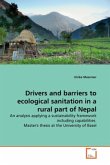Nepal was engulfed in a civil war between Maoist
guerillas and the state from 1996 to 2006. In 2006 a
broad alliance between Maoists, parlamentarian
parties and civil society organizations came together
to bring down the royal autocracy which seized
absolute power one year earlier. The plattform they
had agreed upon included the main demand of the
Maoists during the civil war, namely an election to a
constitutional assembly with the task of writing a
new constitution. In return, the Maoists agreed to
multiparty political competition. To years later, in
April of 2008, the Communist Party of Nepal (Maoist)
won the elections in Nepal and became the biggest
party, much to everyone's surprise. What made this
string of events possible?
Are we witnessing an historic example of peaceful
conflict transformation? Why did the Maoist guerillas
join the peace process?
This book should be of interst to peace researchers,
South-Asia scholars and everyone who is interested in
the politics and ideology of South-Asian
revolutionaries.
guerillas and the state from 1996 to 2006. In 2006 a
broad alliance between Maoists, parlamentarian
parties and civil society organizations came together
to bring down the royal autocracy which seized
absolute power one year earlier. The plattform they
had agreed upon included the main demand of the
Maoists during the civil war, namely an election to a
constitutional assembly with the task of writing a
new constitution. In return, the Maoists agreed to
multiparty political competition. To years later, in
April of 2008, the Communist Party of Nepal (Maoist)
won the elections in Nepal and became the biggest
party, much to everyone's surprise. What made this
string of events possible?
Are we witnessing an historic example of peaceful
conflict transformation? Why did the Maoist guerillas
join the peace process?
This book should be of interst to peace researchers,
South-Asia scholars and everyone who is interested in
the politics and ideology of South-Asian
revolutionaries.








